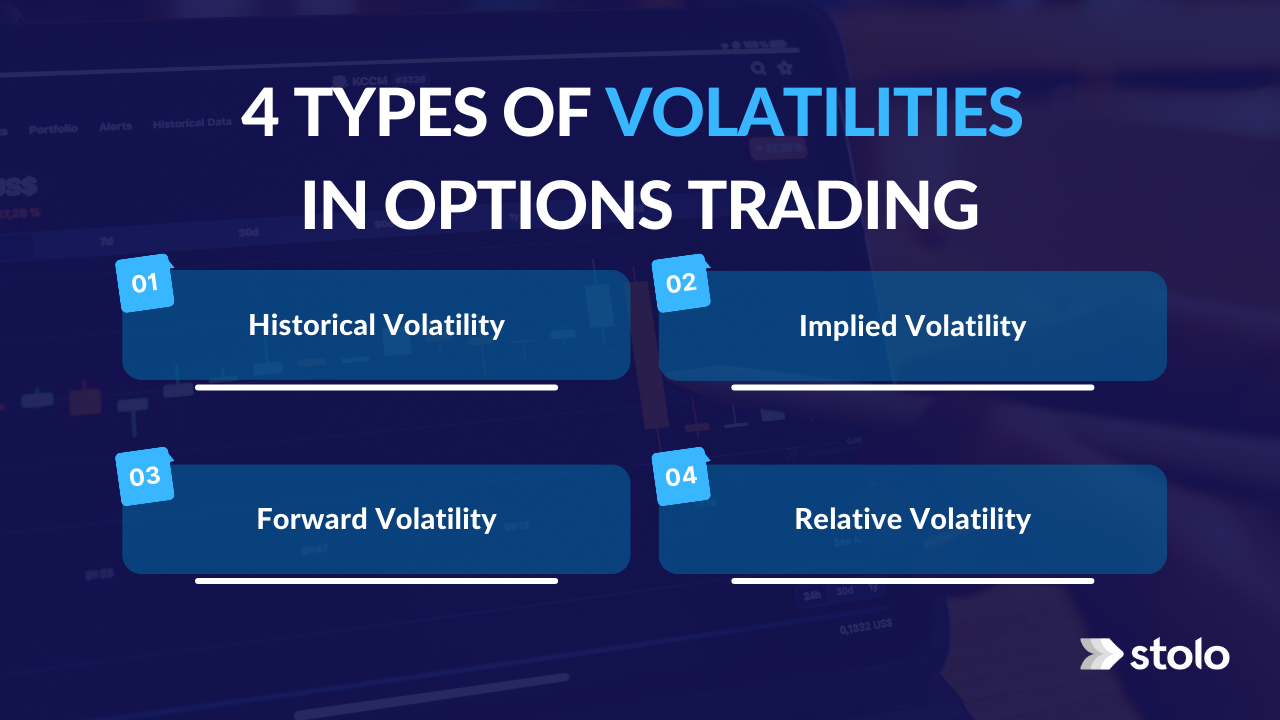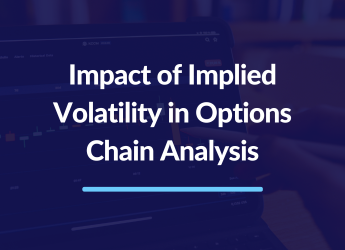Trading options may be an excellent method to make money in the financial markets. However, it is critical to comprehend the different types of volatilities that might impact option prices. This article will go through the many types of volatility in options trading.
What is Volatility
Volatility measures how much an asset’s price swings over time. Volatilities, both historical and inferred, influence option pricing.
4 Types of Volatilities in Options Trading
There are four types of volatilities in Options Trading:

1. Historical Volatility:
Historical volatility (HV) measures an underlying asset’s actual price variations over a certain period. It is determined by taking the standard deviation of the asset’s price movements during the selected period and dividing it by the number of days. Historical volatility is reported as a percentage and is typically used to forecast an asset’s probable price movement. Historical volatility is essential when trading options since it may assist in establishing the option’s fair value.
2. Implied Volatility:
Implied volatility (IV) measures an underlying asset’s predicted future volatility. It is calculated from the price of an option and represents the market’s estimate of future price movement. Implied volatility is an essential issue in option pricing since it has the potential to alter the option’s premium drastically. A high implied volatility suggests that the market anticipates a significant price movement, whereas a low implied volatility means that the market expects less price movement.
To know about the relationship between implied Volatility and Options Premium, Click here
3. Forward Volatility:
Forward volatility (FV) measures an underlying asset’s predicted future volatility over time. In contrast to implied volatility, it is determined using the future prices of options with varying expiration dates. Forward volatility is especially beneficial when a major event, such as an earnings release or a merger, will affect the price of an underlying asset.
4. Relative Volatility:
Relative volatility (RV) is a measure of how volatile one asset is in comparison to another. It is determined by dividing one asset’s historical volatility by another. Relative volatility is especially beneficial in pairs trading, where traders hold positions in two linked assets to profit from price changes.
Conclusion
To summaries, options trading may be complicated, and knowing the types of volatilities in options trading is critical. Options traders may make better judgements and enhance their overall trading success by knowing the various types of volatilities. Historical volatility, implied volatility, prospective volatility, and relative volatility are all essential aspects of option pricing that can significantly influence option premiums.

